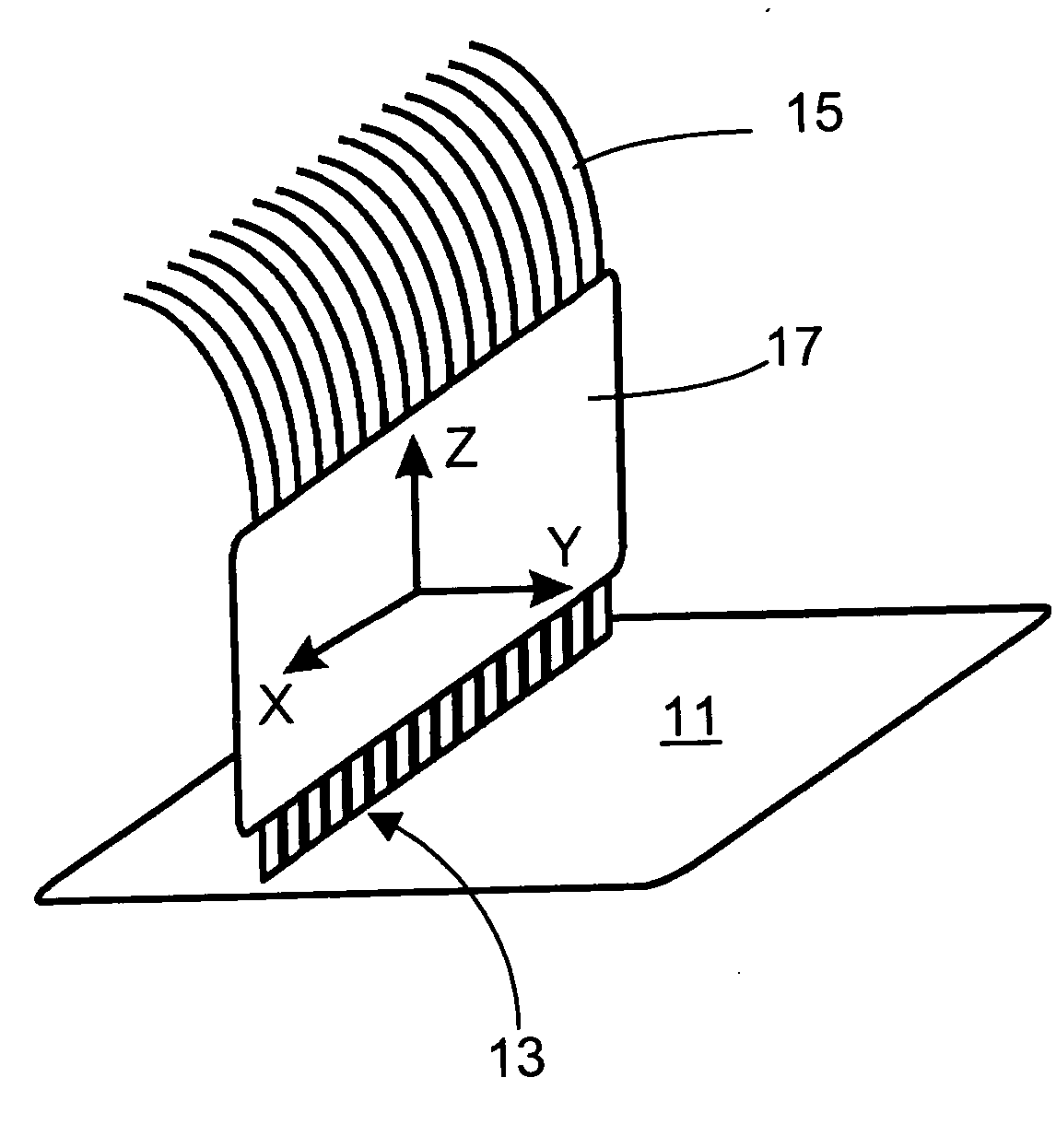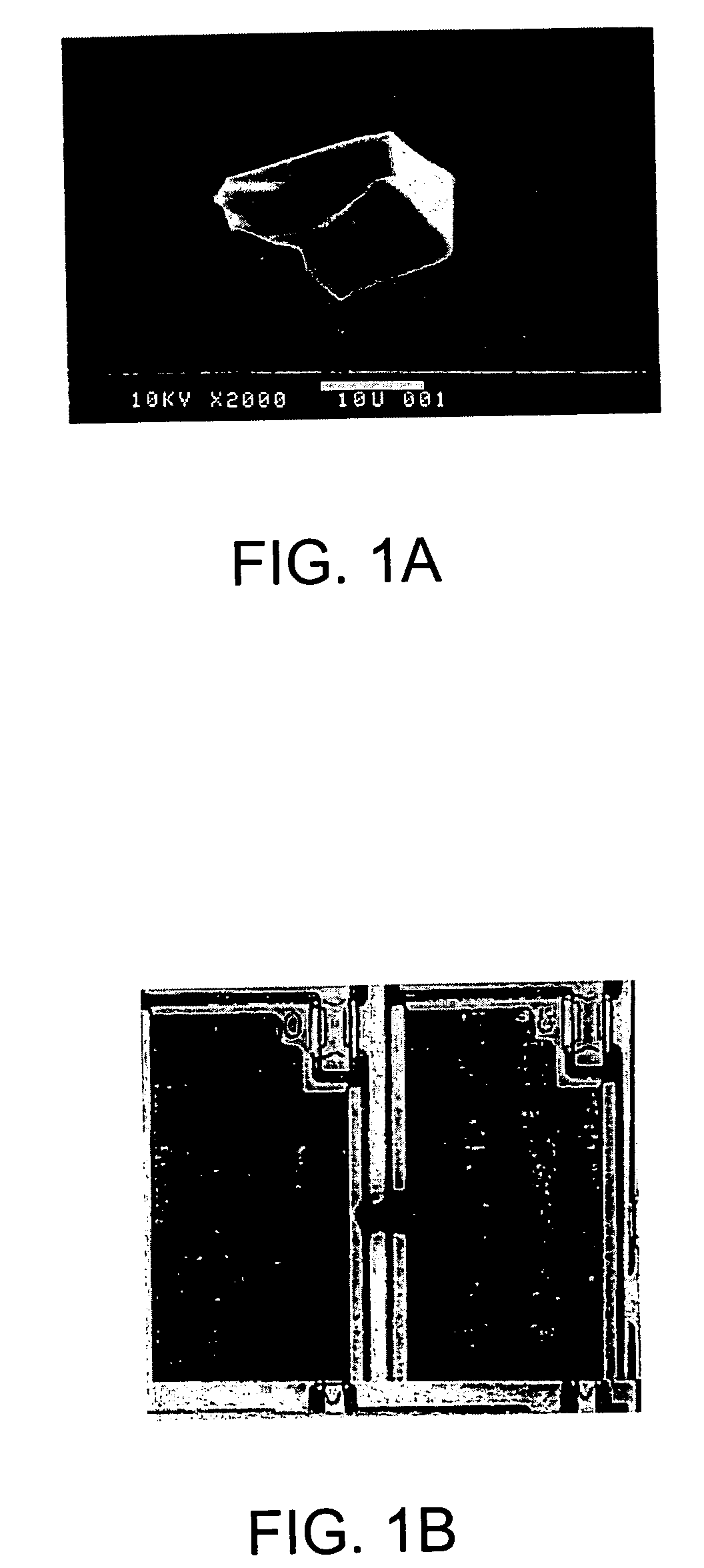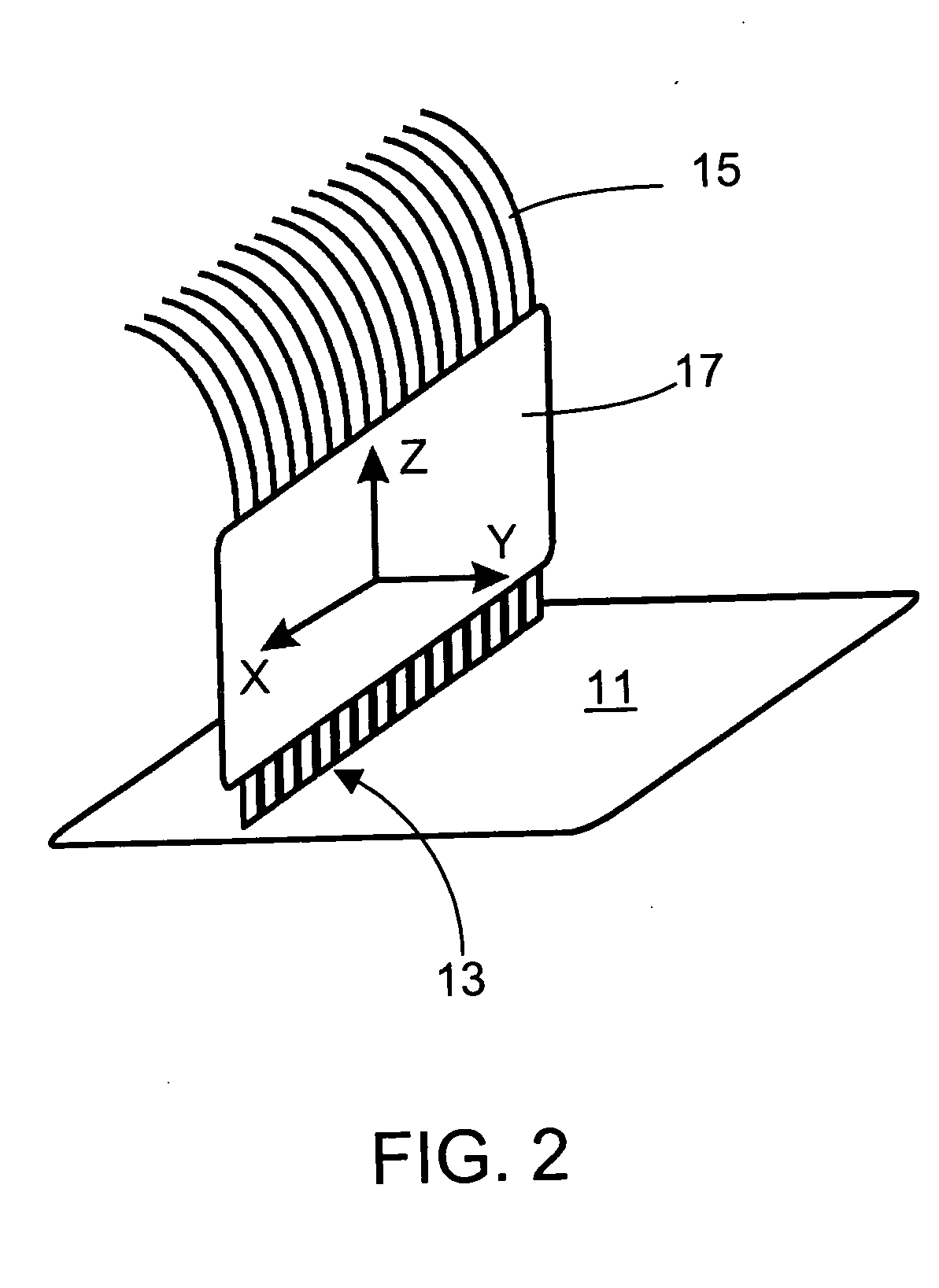Fiber array interferometer for inspecting glass sheets
a fiber array and glass sheet technology, applied in the field of glass sheet inspection, can solve the problems of product rejection, poor resolution, and fast human inspection
- Summary
- Abstract
- Description
- Claims
- Application Information
AI Technical Summary
Benefits of technology
Problems solved by technology
Method used
Image
Examples
Embodiment Construction
In its preferred embodiments, the present invention relates to the inspection of glass sheets and, in particular, to the inspection of LCD glass sheets to determine if defects are present which make the sheet unsuitable for use in the manufacture of liquid crystal displays.
In overview, the invention employs a parallel array of all-fiber interferometers (arranged in a Fizeau or Fabry-Perot configuration) which is scanned along an axis normal to the plane of the array (e.g., the array is scanned along the y-axis in FIG. 2; see below). For light having a wavelength λ, height resolution can be better than λ / 1000 and spatial resolution can be around λ, which is comparable to the spatial resolution achieved with conventional optical microscopy. These height and spatial resolutions make the invention particularly well suited for finding localized, small variations in the height of the surface of the glass, i.e., they make the invention particularly well suited to finding defects. Compar...
PUM
 Login to View More
Login to View More Abstract
Description
Claims
Application Information
 Login to View More
Login to View More - R&D
- Intellectual Property
- Life Sciences
- Materials
- Tech Scout
- Unparalleled Data Quality
- Higher Quality Content
- 60% Fewer Hallucinations
Browse by: Latest US Patents, China's latest patents, Technical Efficacy Thesaurus, Application Domain, Technology Topic, Popular Technical Reports.
© 2025 PatSnap. All rights reserved.Legal|Privacy policy|Modern Slavery Act Transparency Statement|Sitemap|About US| Contact US: help@patsnap.com



